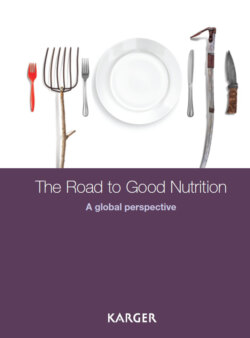Читать книгу The Road to Good Nutrition - Группа авторов - Страница 120
На сайте Литреса книга снята с продажи.
The causes and consequences of food insecurity
ОглавлениеFood insecurity is not a new phenomenon. The effects of natural and man-made disasters have always placed a severe burden on food systems, and there have been few societies that have existed without the fear of famine, or the memory of it.
Famine is also a highly topical subject - as witnessed in the 2011 drought in the Horn of Africa. Figures compiled by the UK Department for International Development (DfID) suggest that between 50,000 and 100,000 people, more than half of them children under five, died as a result of the drought. A total of 13 million are believed to have been affected by the disaster, with livelihoods, livestock and local market systems all caught up in a complex chain of interdependency and suffering. According to a report published by Save the Children and Oxfam, and entitled A Dangerous Delay, many of the deaths could have been prevented had governments and humanitarian agencies been quicker to read the warning signs. “Waiting for a situation to reach crisis point before responding is the wrong way to address chronic vulnerability and recurrent drought in places like the Horn of Africa,” the report concluded. “The international community must change the way it operates to meet the challenge of recurrent crises … Long-term development work is best placed to respond to drought.”
Even in situations in which natural and man-made disasters are not placing intolerable strain on food systems, however, challenges to food security remain in many parts of the world. Lack of water for irrigation, poor soil, inadequate agricultural practices and lack of appropriate tools and seeds can make it difficult to improve yields and efficiency in the production of nutritious foods. Lack of land itself is another major factor, as is, of course, lack of capital. Unsuitable transport systems and inappropriate storage practices can further compromise food stocks whose nutritional value and quality may already be questionable.
In addition to these factors, which affect the availability of food globally, there are cultural practices and beliefs that determine how food is allocated to different individuals within the household - for example the practice of men eating before women and children in some parts of the world (and consuming the choicest and most nutritious elements in a meal because they are the family breadwinner and perceived to need more food, and more of the high-quality foods, than other family members); or the cultural beliefs that some foods (such as eggs in Ghana) should not be given to young children because this may make them thieves when they grow up; or mangoes, which could be an excellent source of vitamin A for young children, but are not given to them in some cultures because these fruits are thought to cause diarrhea.
Another critical factor that determines whether households are food secure or not is women - their social status, their access to resources, and their ability to make key decisions regarding allocation of income and other resources, such as food, within the household. It has been shown over and over again that men and women use resources differently, and that when women have more resources under their control (e.g. income), they are more likely than men to protect the food security of their family and to invest in the health, education and nutrition of their children. For decades now, women have been referred to as being “the key to food security”; they are also critically important for protecting the health and nutrition of their children. Women’s education, their physical and mental health, and nutritional well-being, as well as the time they have available, are all essential ingredients for ensuring their family’s food security. These factors are equally important determinants of how women can take care of their young children’s needs, protect them from infectious diseases, and help them grow and develop into healthy adults, which in turn will equip them to more successfully achieve food security for their own family in the future.
